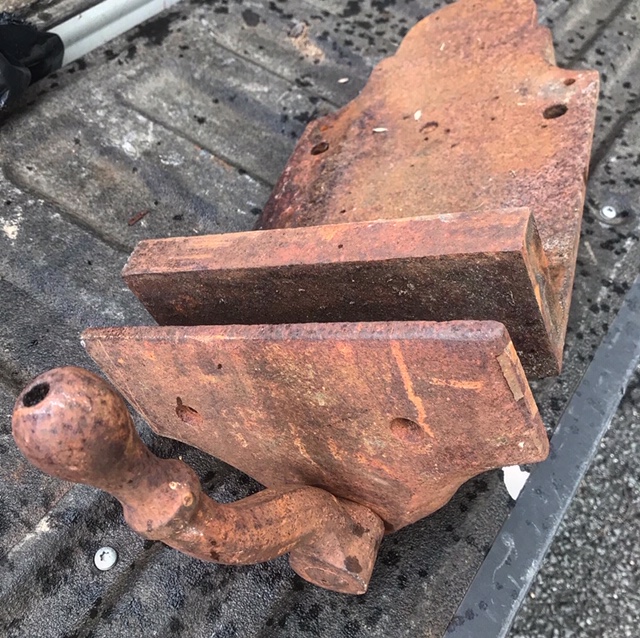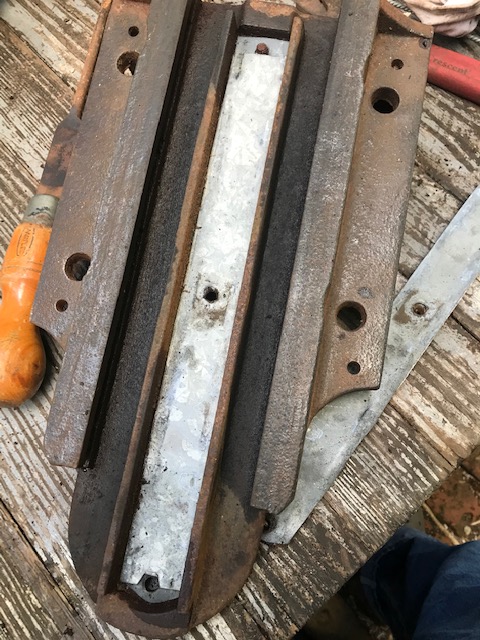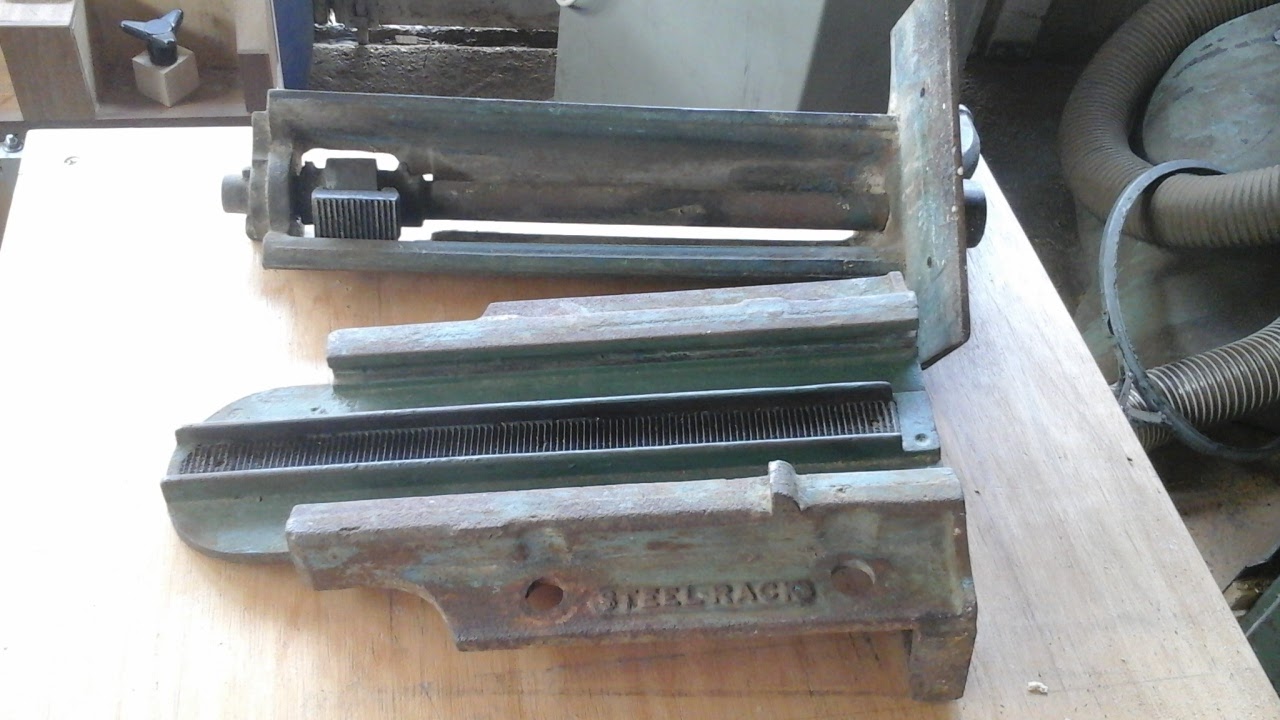Entwisle & Kenyon’s Instantaneous Grip Parallel Vice is one of two vices given a glowing write up in Francis Young's Everyman His Own Mechanic, the other being the Standard Instantaneous Grip sold by Thomas Syers. Young's book was originally published in 1881, three or four years before Parkinson launched the revolutionary Perfect range of quick release vices.
Invention of the Instantaneous Grip
This vice was invented by Wilson Riley in 1877 who assigned ownership of the invention to Jonathan Barnes and Richard Keynon (of Entwisle and Kenyon ltd) . I have not been able to find a copy of the GB patent, although there is a reference to the application (no. 4372) in the 1877 patent gazette:
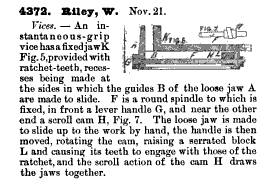
He also filed for a US patent in 1880 (US227582). Once it was protected, Entwisle & Kenyon licensed the design to a US manufacture called Massey who marketed it as the ‘Lightening grip’.
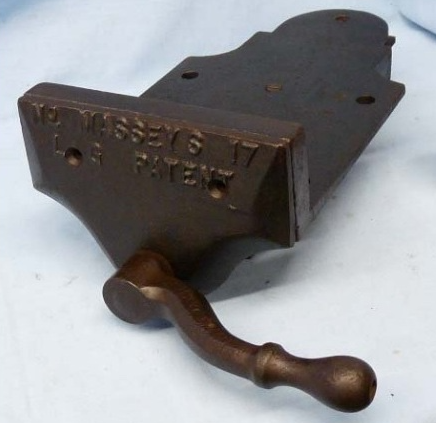
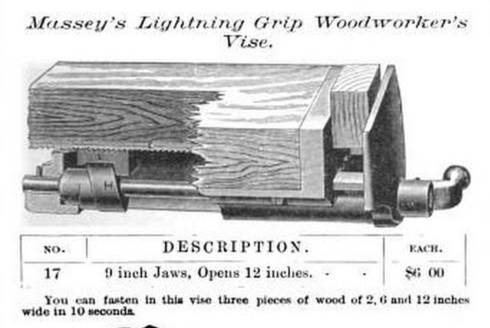
Given the prominent branding, you could be forgiven for thinking it was all Massey’s own work, but here is a letter from E&K clarifying matters!
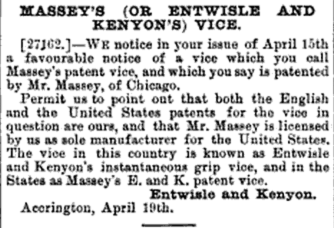
Mechanism
You can see how it works in the partial cross-section below – There is a toothed rack (E) and a toothed block (L) – when the handle is turned upwards the block is disengaged from the rack, and a half-turn downwards causes the cam (H) to engage the teeth in the block with those of the rack. The cam has a spiral shape which causes it to draw the movable jaw slightly forward so the work is gripped.
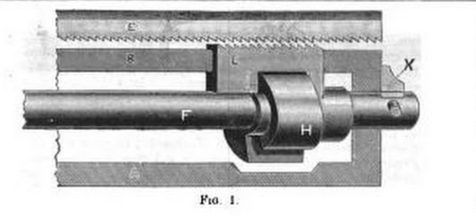
Here are the internals of the vice:
As you can see, the moveable part of the vice rides in a wide groove in the undercarriage which helps prevent the front jaw from racking – this is the feature that meant E&K could claim to have created a ‘parallel’ vice.
Identification
In addition to the cam/rack arrangement and unusual bulbous handle, the casting is sometimes stamped with [STEEL RACK] as in the example above. The Massey version is clearly marked Massey No 17 LG (lightening grip) on the front face.
By 1905 Melhuish were selling a E&K vice alongside vices by Parkinson and the US maker, Toles.
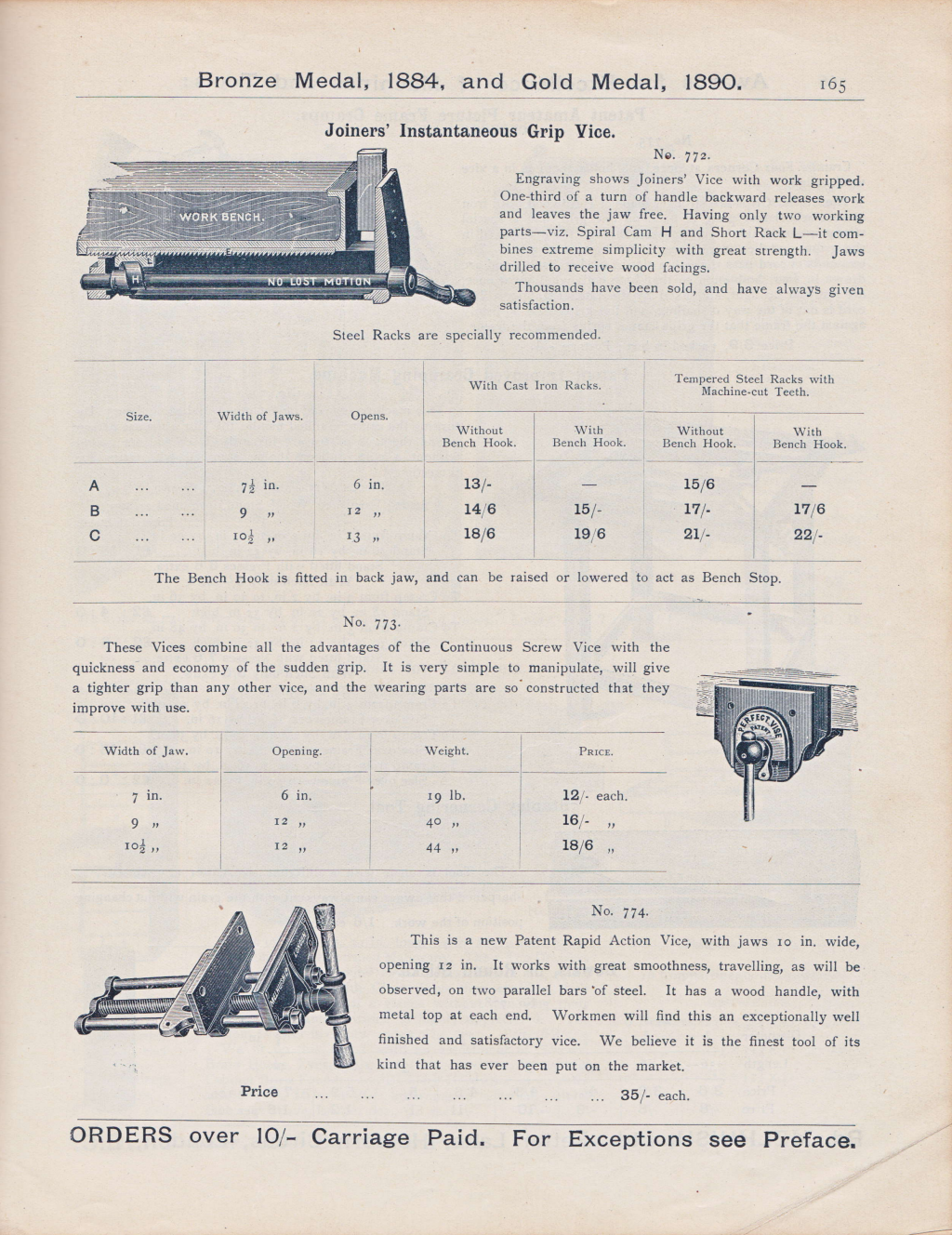
Melhuish also included these vices with their posh workbenches, by far the poshest being the “Excelsior”
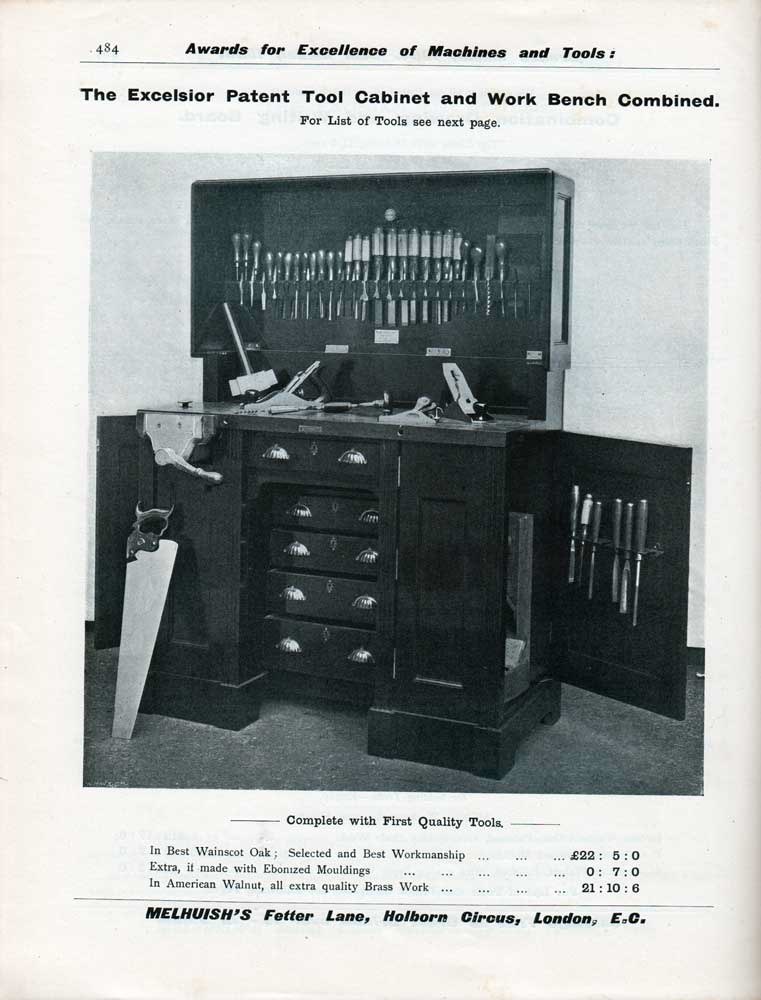
The engraving of the benches in the 1925 Melhuish catalogue still show the E&K vice, but the note in the description explains that they are now using Parkinson vices. This suggest perhaps that the E&K is no longer available, a victim – as were most other ‘instantaneous grip’ designs of this time – to the success of Parkinson’s improved quick-release mechanism.
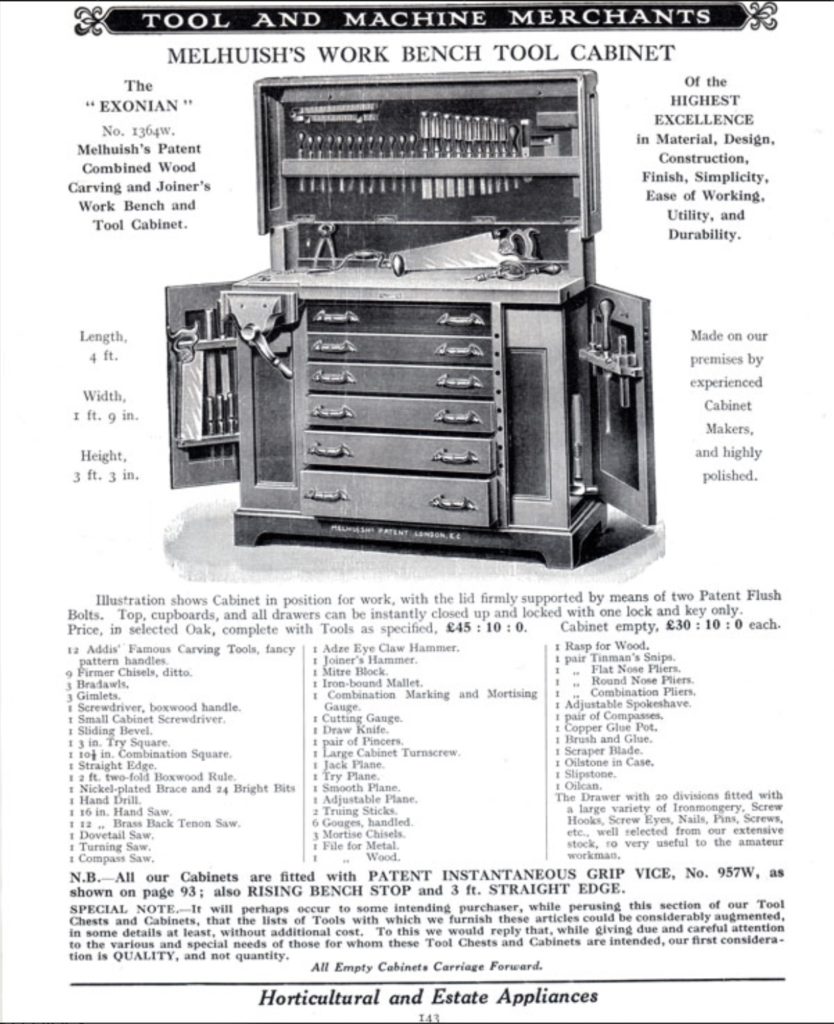
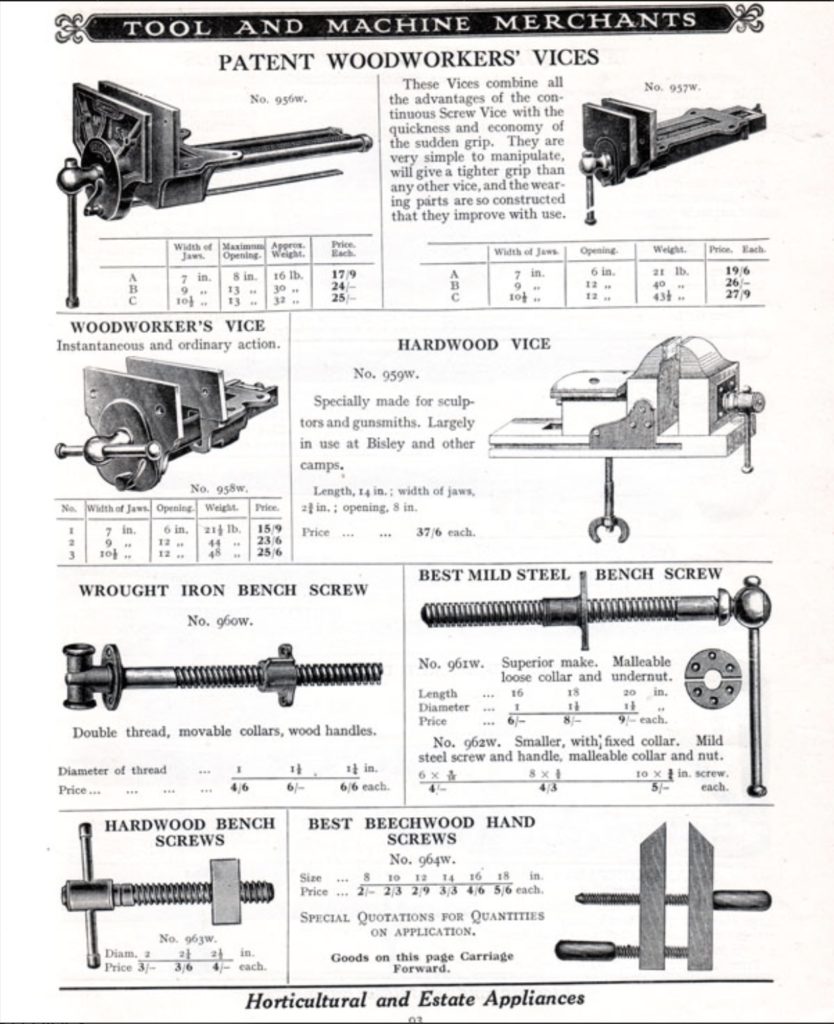
Rob from Louisiana has kindly shared some pictures of his vice. It is stamped with the US patent date but does not have any other identifying marks, so our best guess is this is an early model that pre-dates the later Massey branded castings. You can also see steel shims have been fitted under the toothed rack. It is possible that these were inserted by a previous owner, perhaps trying to adjust for wear in the mechanism or to improve the grip, or by the maker to compensate for or irregularities in the casting.
